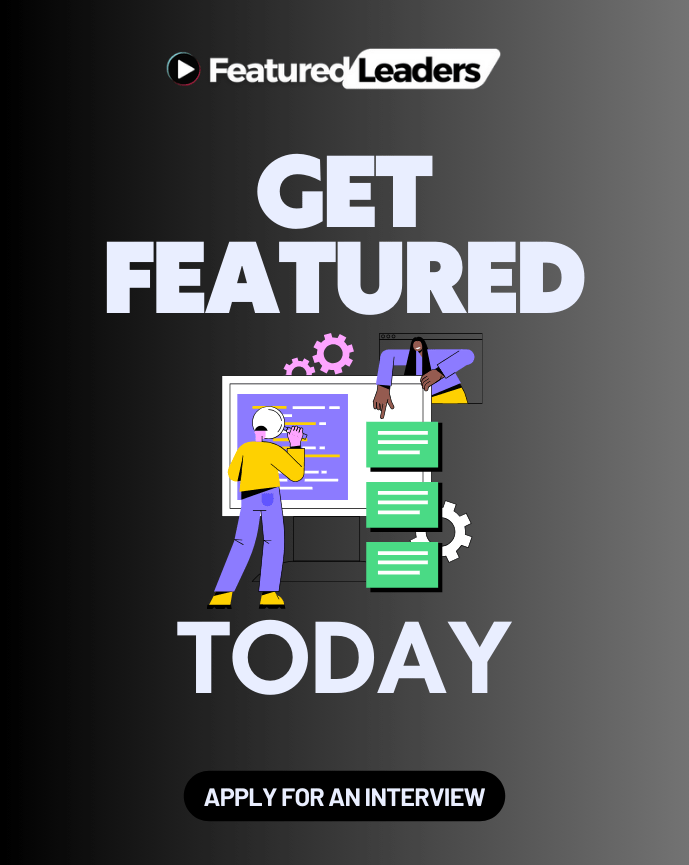This friendly guide helps leaders select learning that links to business goals and real employee needs.
Good training builds skills, engagement, and retention. Companies with solid programs report higher profit margins and faster innovation, yet many people still get no formal learning at work.
You’ll get a step-by-step plan: needs analysis, measurable goals, method picks, tech choices, content design, rollout, and evaluation. This approach names a program manager, explains internal marketing, and shows ways to measure impact.
This guide suits L&D leaders, HR, people managers, or any person charged with building employee training. Expect practical options for new hires and ongoing upskilling, plus questions leaders can ask right away.
Start where you are: aim for training that fits daily work, boosts performance, and helps teams sustain success.
Key Takeaways
- Align learning with clear business goals and measurable outcomes.
- Pick methods and tech that match employees’ work and skills.
- Appoint a program manager and promote participation internally.
- Include options for new hires and ongoing upskilling.
- Track impact so leaders and employees see value fast.
Why the Right Training Program Matters for Performance and Business Outcomes
A strong learning plan turns scattered information into reliable on‑the‑job competence.
For employees, focused employee training builds practical skills and relevant knowledge that make daily work easier and career paths clearer.
When staff get coaching and resources that fit their needs, engagement rises. That means employees stay longer, feel valued, and contribute more.
Benefits for employees: skills, engagement, and career growth
- Skills growth: Structured sessions plus on‑job exercises help employees perform tasks confidently.
- Career mobility: Certificates and internal promotions reward learning and open paths upward.
- Self-directed access: Learning on demand saves time and supports timely reinforcement.
Benefits for organizations: retention, productivity, and profit margin
Organizations with strong learning cultures see clear gains. Deloitte reports higher innovation and productivity. Zippia shows firms with comprehensive training programs enjoy bigger profit margins.
| Impact area | What leaders see | Why it matters |
|---|---|---|
| Retention | Lower turnover, more loyalty | Reduces hiring costs and preserves institutional knowledge |
| Productivity | Faster task completion, higher output | Improves margin and customer outcomes |
| Innovation | More ideas, quicker adoption | Supports long‑term success and market advantage |
Yet many employees still self‑teach. A structured program reduces wasted time, creates consistency, and increases overall performance.
Practical tip: Start with short, job‑linked modules that deliver usable skills fast, then expand the range of learning across roles.
How to Choose the Right Training Program
Align every training choice with a concrete business priority and a measurable learning goal.
First, clarify high‑level goals and turn them into specific learning goals for each audience. Use research, interviews, and short surveys to map training needs by role and level.
Involve employees and managers early. Ask clear questions about daily tasks, tools, and main process pain points. That keeps learning practical and linked to real work.
Decision steps that work
- Define goals: set one measurable goal per audience segment.
- Map audiences: identify who needs training and why.
- Shortlist methods: weigh delivery against time, tech, and preferences.
- Assign ownership: a program manager should plan, run, and measure results.
Get leader buy‑in early, pilot a starter program that solves an urgent need, then scale what proves effective. Build checkpoints for reassessment and fast adaptation.
| Option | Speed to value | On‑job transfer | Best for |
|---|---|---|---|
| Microlearning modules | Fast | Good with practice tasks | Skill refresh, high-volume employees |
| Blended cohort | Medium | High with coaching | Leadership, complex skills |
| Virtual instructor‑led | Medium | Moderate | Distributed teams needing interaction |
Start with a Clear Training Needs Analysis
Begin by mapping gaps between expected job skills and current employee performance. This first step makes sure any learning links directly to business priorities and measurable outcomes.
Align the initiative with organizational goals and job competencies. Inventory roles, collect performance data, and gather core information through interviews and short surveys.
Identify skills and performance gaps
Note where employees struggle with tools, processes, or customer work. Use examples from real cases so findings stay practical and actionable.
Prioritize needs and compare options
Rank gaps by impact, urgency, and feasibility given time and resources. Compare methods that close gaps fast—microlearning, coaching, or blended approaches—and pick one clear step forward.
Define success criteria
Document what success looks like: scope clarity, stakeholder alignment, and checkpoints for progress. Plan baseline and follow-up data collection so you can show whether skills and performance improved.
- Tip: Engage managers and employees to validate results and build buy-in.
- Tip: Create a simple needs map linking gaps to programs and outcomes.
Set Specific Goals and the Metrics You’ll Use to Track Progress
Translate skills gaps into specific, time‑bound learning targets for each audience. After your training needs assessment, define competency thresholds and a clear goal for every cohort.
Turn priorities into SMART goals that map modules, assessment scores, and behavior change. Document success thresholds for employees, such as target test scores or observed on‑the‑job steps.
Pick a balanced metric set that covers quantity, quality, time, cost, and effectiveness. Use leading indicators like course starts and module completion alongside lagging indicators such as performance outcomes and retention.
Milestones, feedback, and dashboards
- Define milestones for each step and assign ownership for goals and reports.
- Build dashboards that show completion, engagement, and key L&D information in real time.
- Create feedback loops with employees and managers so you can refine content and remove blockers quickly.
Plan measurement resources—people, tools, and time—so reporting stays fast and useful. Clear metrics accelerate learning, save time, and build trust across the organization.
Choose the Best Training Methods: In‑Person, Virtual, or Blended
Pick delivery styles that match skill type, team size, and real work rhythms. Use a simple rule: prefer hands‑on formats when practice and feedback matter, pick virtual options when scale and flexibility matter, and blend for long‑term reach.

In‑person methods for practice and coaching
In‑person works well for mentoring, on‑the‑job training, instructor‑led sessions, and coaching. These sessions give fast feedback and let instructors correct technique in real time.
Virtual formats when scale and access matter
Virtual options include online courses, recorded lectures, webinars, and AI simulations. Use these for self‑paced modules, simulations, and wide rollouts that need easy tracking.
Blended learning for flexibility and reinforcement
Blended mixes both so employees move between live practice, short eLearning, and coaching. This reduces work disruption and supports different schedules.
Map methods to program types
| Program type | Recommended methods | Why it fits |
|---|---|---|
| Onboarding | Live kickoff, self‑paced course, mentor | Phased, role‑specific ramp |
| Compliance | Online course, certification tracking | Mandated, easy to measure |
| Leadership | Coaching, cohort practice | Soft skills need feedback |
| Technical | Simulations, on‑job practice | Hands‑on tools and tasks |
- Start with essentials: a live kickoff, a short eLearning course, then follow with coaching.
- Consider group size, person‑to‑person interaction, and employee experience when picking a method.
- Plan for bandwidth and accessibility so every employee can complete required learning on time.
Select the Right Technology Stack to Power Learning
A compact, well-integrated stack speeds up access to knowledge where people work. Pick platforms that let L&D teams create and update content, track course progress, and analyze outcomes without heavy admin overhead.
Core LMS capabilities:
- Content authoring, personalization, tracking, and analytics so employee training is managed end‑to‑end.
- Progress dashboards that let learners revisit materials and managers review growth and readiness.
- Assessment and completion tracking tied to on‑the‑job indicators leaders care about.
Role access, scalability, and workflow integration
Grant access by role and learning needs so information appears only when relevant. Integrate with email, chat, and HR systems to deliver content at the right time without disrupting work.
Enablers for self‑directed learning and visibility
Provide searchable libraries, clear learning pathways, and user-friendly dashboards. Consider digital adoption platforms for in‑app guidance that shortens time to proficiency on critical skills.
- Verify reporting depth and scalability for multiple programs and growing audiences.
- Prioritize usability so employees adopt the system quickly and find courses with fewer clicks.
- Pilot one training program, collect feedback, and iterate before broad rollout.
Design Engaging Content with Subject‑Matter Experts
Work with subject experts early so course material reflects real job work and company standards. This step helps L&D shape content that employees value and apply quickly.
Outline modules with clear outcomes and assessments
Start each module with a short goal and one measurable result. Include assessments that use practical exercises and real examples so employee learning maps to on‑the‑job actions.
Use modern content and AI‑assisted authoring when useful
Mix micro content, demos, practice exercises, and coaching prompts to keep engagement high. Use AI‑assisted authoring to speed drafts, then have SMEs review and localize material for your organization.
- Partner with SMEs: define fundamentals, actionable steps, and advanced topics.
- Keep pieces modular: short courses and checklists cut cognitive load and ease updates.
- Review cycle: L&D plus SMEs verify accuracy and accessibility before launch.
Result: a focused, learner‑first library that builds skills, validates knowledge, and supports faster application after each job training step.
Implement with Leadership Buy‑In and Internal Marketing
Begin by building a small, visible launch that gathers feedback and proves value fast. Run a pilot with a representative group so you can validate fit, collect questions, and adjust before spending more time and resources.
Pilot, support channels, and stakeholder alignment
Line up support channels early: office hours, a help desk, and a short FAQ hub. That gives employees quick information and reduces friction during initial sessions.
Create a simple rollout step that sequences communications, training sessions, and follow-ups over a realistic time window. Track early engagement and share quick wins to build momentum.
Secure leadership advocacy and communicate the “why”
Ask leaders to speak about success criteria and why this matters for the organization. Leadership advocacy signals priority and drives accountability.
Communicate benefits clearly for employees and the business, and anticipate common questions so messaging answers them up front.
Brand your program and promote participation with creative campaigns
Give the program a memorable identity and launch campaigns that make participation appealing. Equip managers to encourage employees and recognize progress.
- Run a pilot with a representative group and iterate based on feedback.
- Provide resources and support channels so people get help fast during sessions.
- Brand and market the program with friendly, frequent messaging that highlights quick wins.
With a dedicated manager overseeing planning, metrics, and ongoing marketing, you build expectation and create a path for program success.
Evaluate Results, Reinforce Learning, and Iterate
Measure learning impact from several angles so leaders see what works and where updates are needed. Use completion rates, assessment scores, and related performance signals to judge whether skills and knowledge stick on the job.
Track completion, assessments, and on‑the‑job impact
Measure completion and assessment results, then compare those with real performance metrics. Look for upticks in quality, speed, or customer outcomes linked to each course.
Gather feedback from learners and managers
Ask short, targeted questions that reveal gaps in content or methods. Manager input shows whether employees apply new exercises and skills in daily work.
Reinforce learning with spaced practice
Use microlearning, short exercises, and incentives over time. Small, repeated steps improve retention and make training more effective.
Update programs and expand the portfolio
- Use dashboards to monitor progress and spot where extra support is needed.
- Compare results across audiences to find the best formats and variety of outcomes.
- Retire low‑impact courses and add modules when job training tasks or tools change.
Final step: tie evaluation to business cycles and share success stories so leaders and employees see clear value and steady progress.
Conclusion
Finish by setting a single measurable priority and assigning one person to own next steps. Summarize the path: analyze needs, set clear goals and metrics, pick methods and tech, design learning with SMEs, then implement with leadership support.
Start small, measure, iterate. High‑performing programs feature a dedicated manager, alignment with company goals, modern content, internal marketing, reinforcement, and coaching that links learning back to job work.
Organizations with strong employee training report better innovation, productivity, and profit. Pick one priority this week, apply this guide, and make a simple plan that measures progress over time.
FAQ
What are the first steps for a training needs analysis?
Start by linking learning goals to business objectives and job competencies. Interview managers, review performance data, and survey employees to identify skill gaps. Prioritize needs by impact and feasibility, then define clear success criteria and metrics before choosing formats or vendors.
How do I set measurable learning and performance goals?
Turn gaps into SMART goals: specific, measurable, achievable, relevant, and time‑bound. Pick metrics across quantity, quality, time, cost, and behavior change—completion rates, assessment scores, time‑to‑competency, error reduction, and ROI. Use milestones and dashboards for ongoing tracking.
Which delivery method fits onboarding, compliance, and leadership programs?
Match method to purpose: onboarding benefits from blended learning and coaching; compliance often uses eLearning and assessments for scale; leadership training needs workshops, coaching, and simulations. Combine modalities when a single method won’t meet diverse needs.
What features matter most when choosing an LMS?
Look for content management, user personalization, progress tracking, assessment tools, and analytics. Ensure role‑based access, scalability, and integrations with HR systems and workflow tools. Self‑directed learning features and mobile access boost adoption.
How can I keep content engaging and relevant?
Work with subject‑matter experts to outline clear module outcomes and include assessments. Use modern formats—video, scenarios, simulations, microlearning—and consider AI‑assisted authoring for faster updates. Add real‑world exercises and peer interactions.
What are effective ways to secure leadership buy‑in?
Present clear links between training and business outcomes, backed by baseline data and projected ROI. Pilot a small program, share early wins, and involve leaders as sponsors or mentors. Internal marketing that communicates the “why” increases support and participation.
How should we evaluate training impact after rollout?
Track completion, assessment performance, and on‑the‑job metrics tied to your goals. Collect learner and manager feedback, then analyze behavior change and business indicators like productivity or retention. Use findings to refine content, methods, and schedules.
What role does blended learning play in scaling programs?
Blended learning balances instructor‑led sessions with self‑paced modules and on‑the‑job practice. It offers flexibility, better access across locations, and consistent core content while preserving live coaching for complex skills—making scale and quality easier to manage.
How often should training content be updated?
Review content regularly—at least annually—or sooner if job tasks, tools, or compliance rules change. Use learner feedback and performance data to prioritize updates. Agile, modular content and AI tools make updates faster and less costly.
What are quick tactics to boost participation and completion?
Use internal branding, targeted communications, incentives, and manager endorsements. Set clear expectations, schedule protected learning time, and provide easy access via mobile or LMS. Microlearning and spaced practice help maintain momentum.
How do we measure ROI for employee training?
Combine direct metrics (productivity gains, error reduction, time savings) with soft measures (engagement, retention). Estimate costs avoided and revenue impact, then compare against program expenses. Use control groups or phased rollouts for clearer attribution.
Can small organizations implement effective training on a limited budget?
Yes. Prioritize high‑impact gaps, use low‑cost eLearning and peer coaching, and leverage free or affordable platforms like Google Workspace and LinkedIn Learning. Start small with pilots, measure results, and scale what works.






